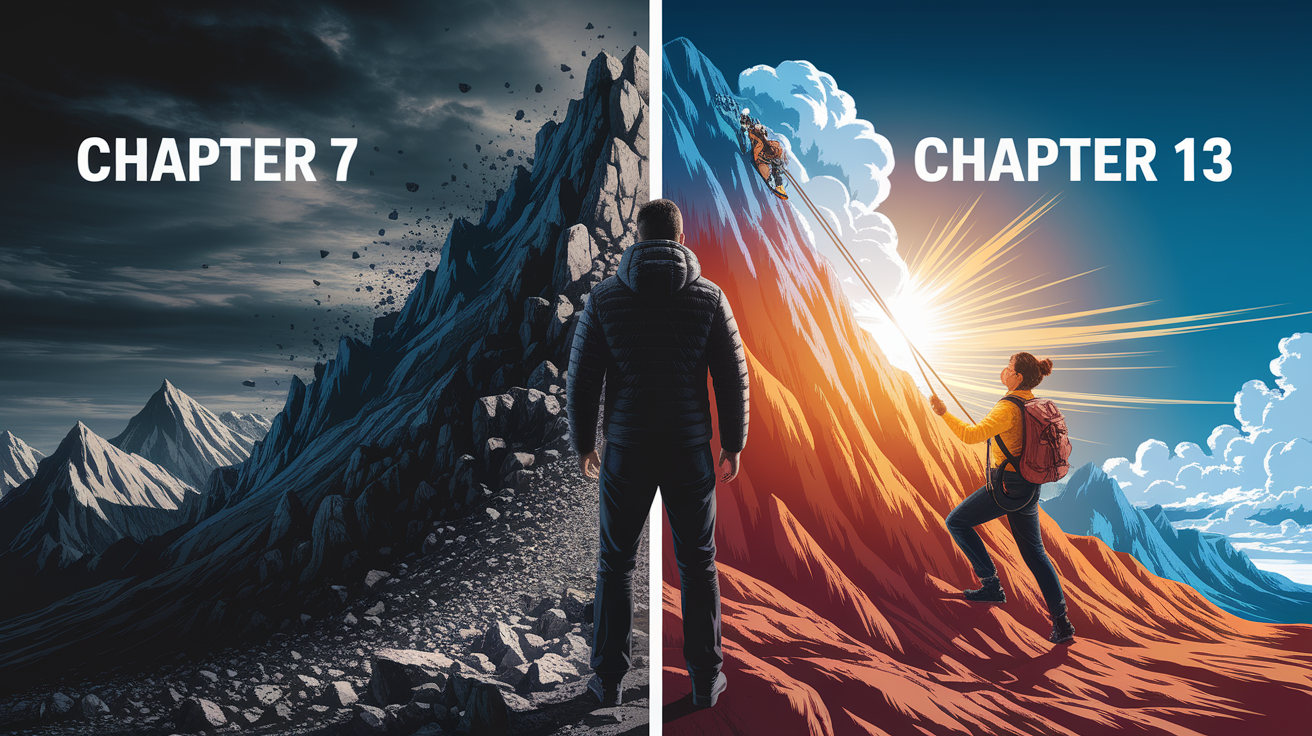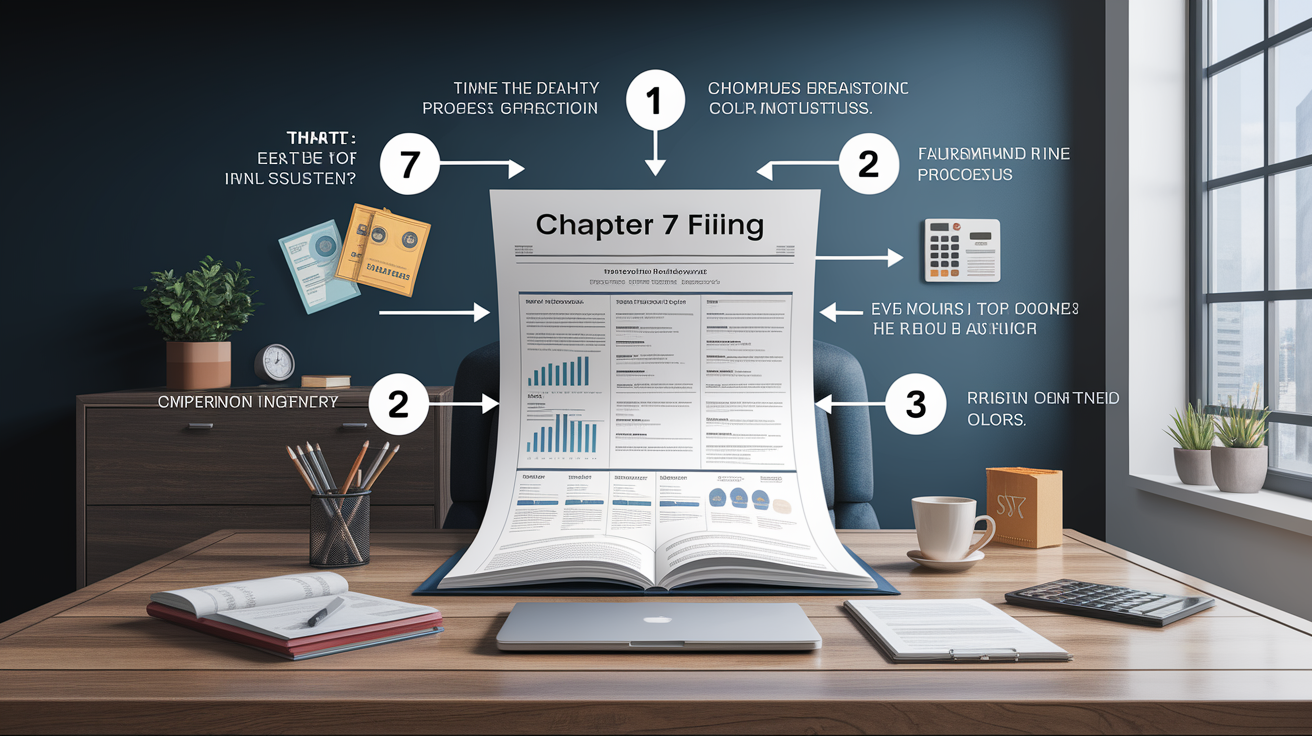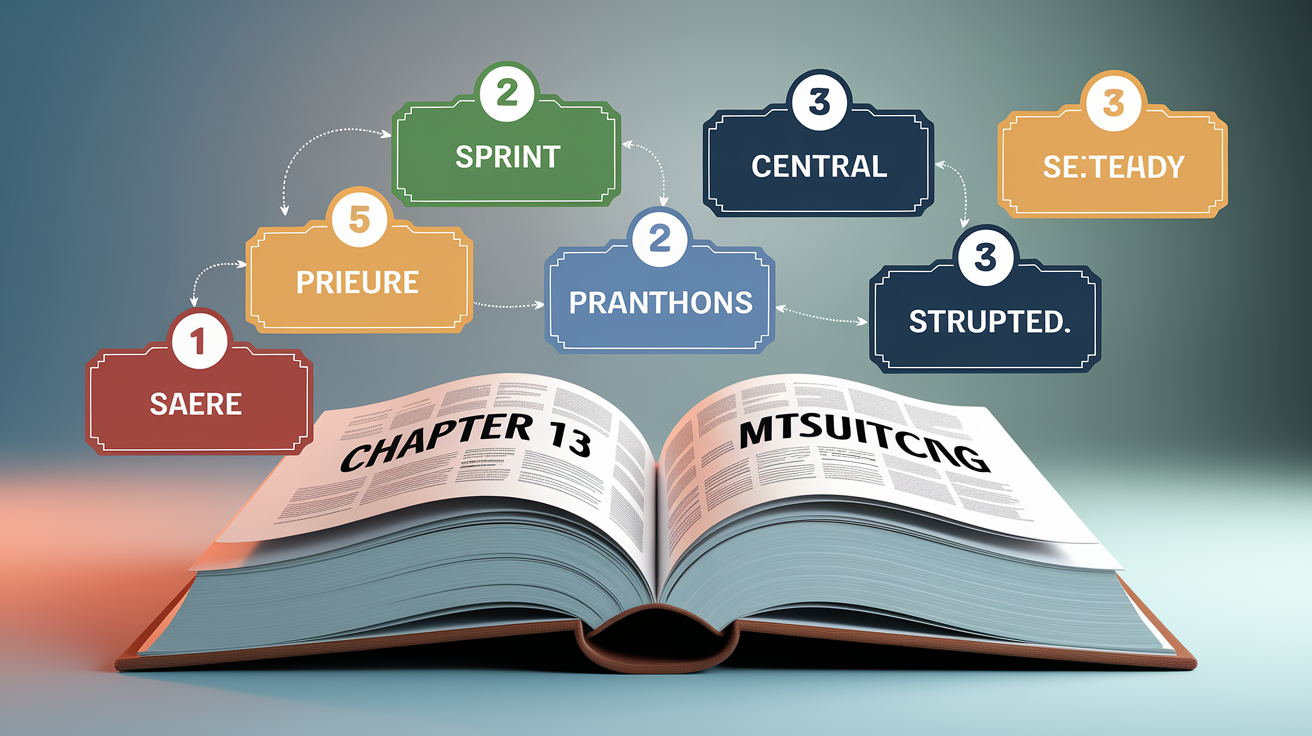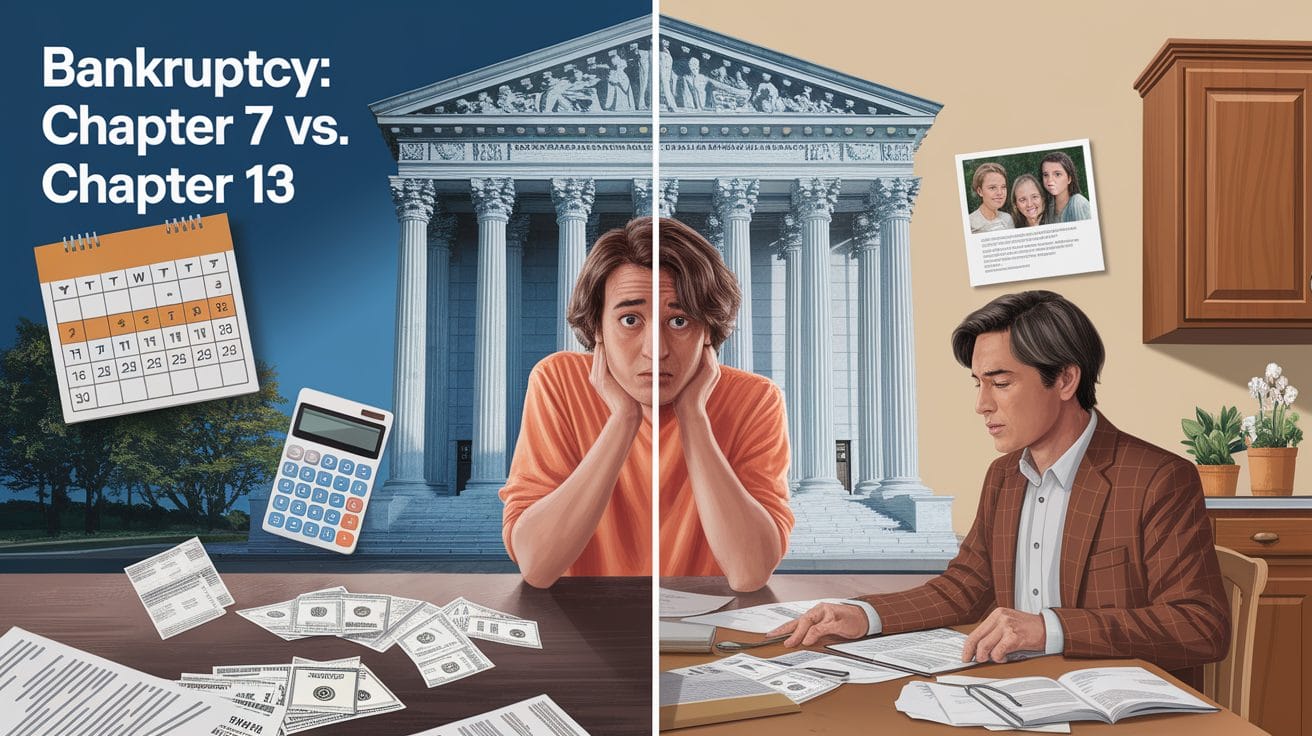Overview of bankruptcy-chapter-7-vs-13
Bankruptcy can feel like standing at the bottom of a mountain with no climbing gear—overwhelming and uncertain. Yet, understanding the terrain is the first step toward conquering it. Two of the most common routes up that mountain are Chapter 7 and Chapter 13 bankruptcy.
Chapter 7, often called liquidation bankruptcy, is designed for individuals with limited income who need quick debt elimination, particularly for unsecured debts like credit card balances or medical bills. It typically results in a discharge within three to five months but may involve selling nonexempt property through a court-appointed trustee.

Chapter 13, known as reorganization bankruptcy, works differently—it allows you to keep your property by creating a court-approved repayment plan lasting three to five years. This option suits people with steady income who need time to catch up on missed payments for secured debts such as mortgages or car loans while maintaining asset protection.
Both forms of bankruptcy place an automatic stay on creditor actions, halting foreclosure proceedings, wage garnishment, and collection calls. However, neither clears all types of obligations—debts like child support, alimony, and certain taxes usually survive discharge.
Step-by-step process for filing Chapter 7
Think of Chapter 7 as a sprint. It’s usually over quickly, but it requires you to qualify first through something called a means test—a calculation comparing your income to your state’s median.

- Complete credit counseling: You must undergo an approved credit counseling course within 180 days before filing.
- File a bankruptcy petition: Submit forms to the bankruptcy court with details about income, assets, debts, expenses, and exemptions. A filing fee applies, though fee waivers are possible.
- Automatic stay begins: The court order stops most collection actions immediately.
- Trustee appointment: The court assigns a trustee to oversee your case, verify documents, and potentially sell nonexempt property.
- 341 meeting of creditors: You answer the trustee’s and creditors’ questions under oath.
- Debt discharge: About three to five months after filing, qualifying debts are eliminated, providing debt relief.
Step-by-step process for filing Chapter 13
If Chapter 7 is a sprint, Chapter 13 is a marathon—steady and structured. It’s for individuals with enough reliable income to commit to a payment plan over time and often to save assets from foreclosure or repossession.

- Eligibility check: Verify that your secured and unsecured debts are below the limit (about $2,750,000 in 2024) and that you have regular income.
- Credit counseling: As with Chapter 7, this is mandatory before filing.
- Petition and repayment proposal: File with the bankruptcy court, including your proposed repayment plan based on disposable income and debt priority.
- Automatic stay: Debt collection stops immediately upon filing.
- Trustee review: The trustee evaluates your plan and negotiates any necessary changes.
- Confirmation hearing: A judge approves the repayment plan, typically lasting three to five years.
- Plan completion and discharge: Upon making all payments, any remaining eligible unsecured debt is discharged, and you keep your property.
Key benefits of choosing bankruptcy-chapter-7-vs-13
So, why choose one over the other? The benefits differ, just as a bridge differs from a tunnel—they both get you across, but the experience is vastly different.
- Chapter 7 benefits:
- Quick discharge (often within months).
- Eliminates most unsecured debt, offering a clean slate.
- Lower cost and simpler process compared to Chapter 13.
- Chapter 13 benefits:
- Allows you to keep property, even when behind on mortgage or car payments.
- Stops foreclosure and helps restructure secured debts.
- Possible to reduce secured loan principal (loan cramdown) or remove junior liens.
According to data, about 63% of bankruptcy filings are Chapter 7, largely due to the speed and effectiveness in eliminating unsecured debt. Chapter 13 accounts for the remaining share, reflecting its value for those needing financial restructuring over time.
Practical tips for selecting between Chapter 7 and Chapter 13
Still unsure? Choosing between them can feel like standing at a crossroads. Asking the right questions and taking measured steps can guide you toward the better path for your circumstances.
- Assess your income stability—if you cannot sustain monthly payments, Chapter 7 may be more realistic.
- Consider asset equity—if your home or car equity exceeds bankruptcy exemptions, Chapter 13 may protect them.
- Look at types of debt—unsecured vs. secured matters greatly in your choice.
- Factor in time commitment—three to five years for Chapter 13 versus a few months for Chapter 7.
Practical steps to decide:
- Consult a qualified bankruptcy attorney to review eligibility and long-term impacts.
- Complete a means test calculation to see if Chapter 7 is available.
- List all debts, separating secured from unsecured, and note which obligations will remain regardless of bankruptcy.
- Examine your budget to determine if monthly payments under a Chapter 13 repayment plan are feasible.
Bankruptcy is not an end—it’s a reset. Whether you take the rapid relief of Chapter 7 or the structured repayment of Chapter 13, you are rebuilding your financial footing step by step. As you weigh the options, remember that the right plan balances debt relief with the life you want to protect moving forward.







